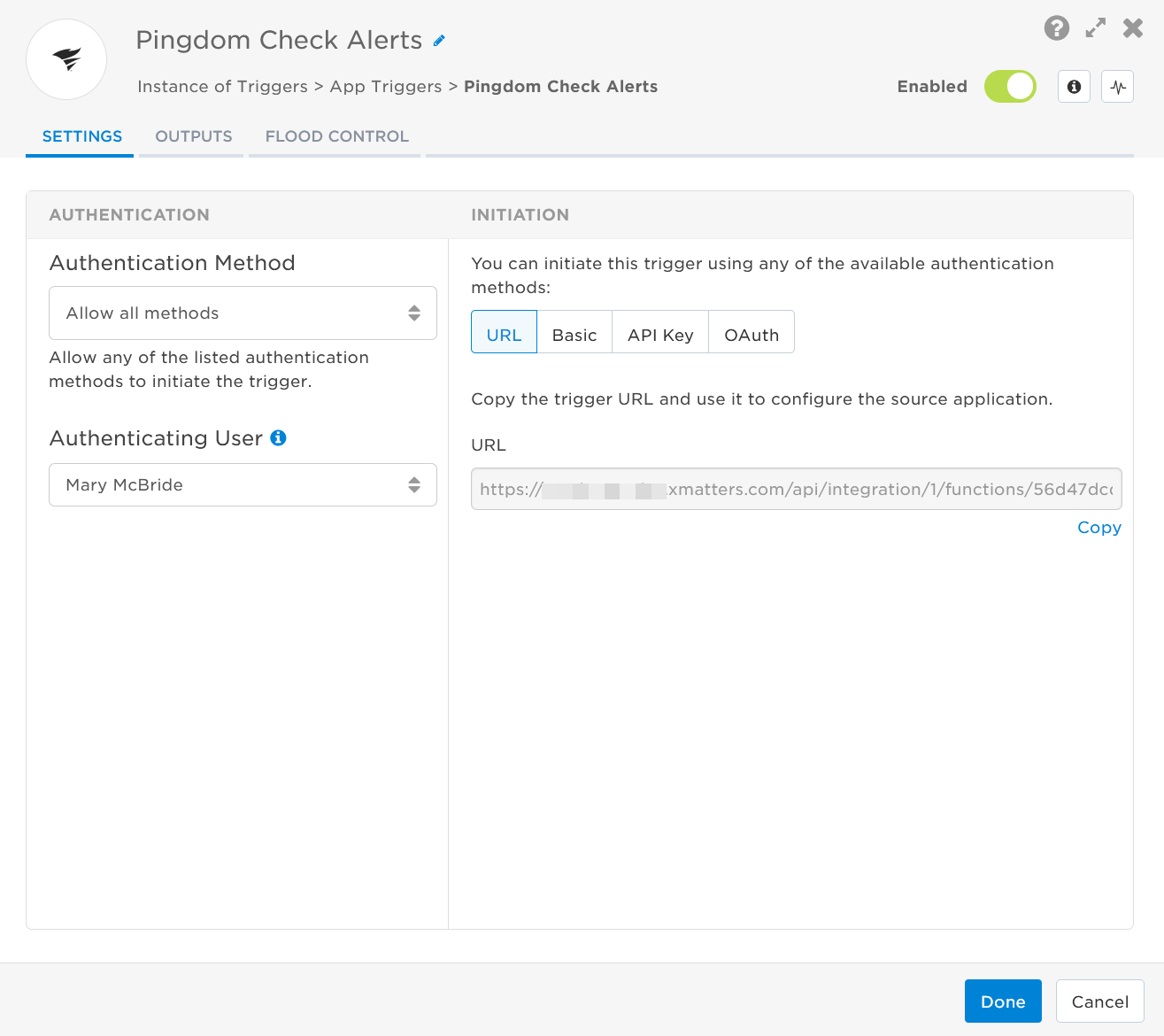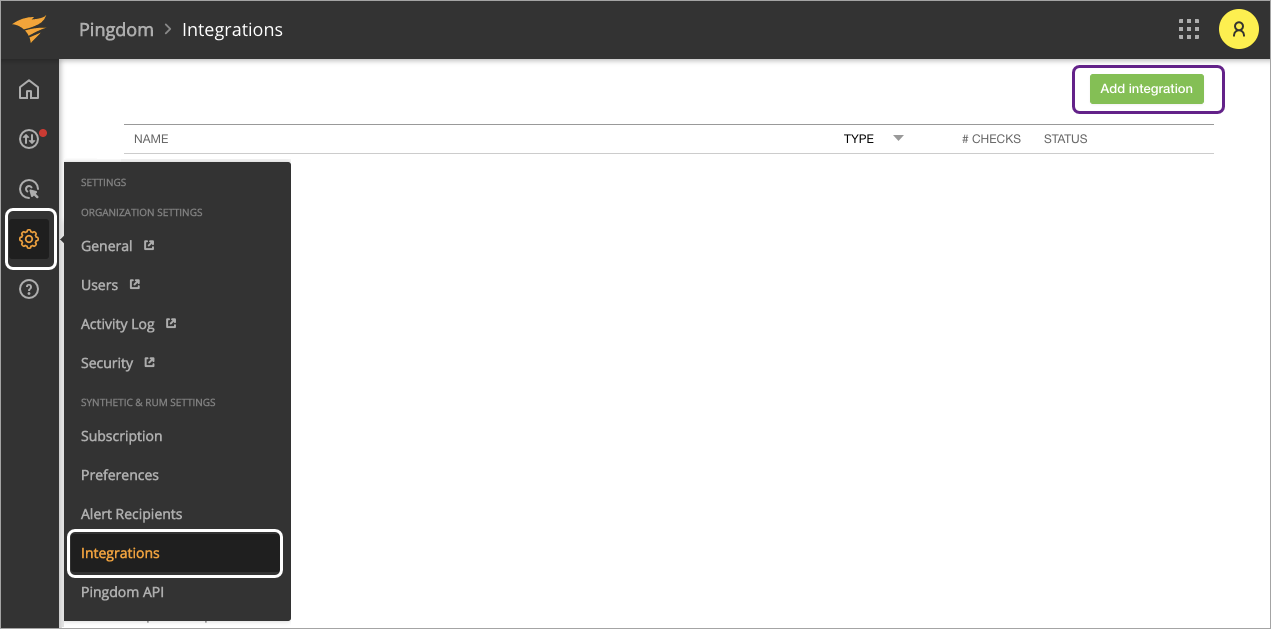Pingdom Check Alerts
The built-in Pingdom Check Alerts trigger initiates a flow when it receives a signal from a Pingdom webhook.
Add the Pingdom Check Alerts trigger to the canvas
- Go to the Triggers tab in the palette, expand the App Triggers section and drag the trigger onto the canvas.
- Double-click the trigger (or click the pencil icon).
- Set the authenticating user, then copy the URL — you'll use this to set up the webhook in Pingdom. Alternatively, you can create an integration user to use as the authenticating user.

- Click the Flood Control tab to edit the trigger's default flood control settings. For more information about these settings, see Trigger Flood Control.
- Click Done.
- On the flow canvas, connect the steps you want to run when xMatters receives a request to that URL.
You're now ready to configure Pingdom to target the trigger.
Configure Pingdom to send requests to the trigger URL
To have Pingdom send alerts to the flow trigger, you need a check and an integration. The check determines if something is wrong. The integration is the webhook that notifies xMatters.
- In Pingdom, select Integrations from the menu bar, then click Add integration.

- In the Add Integration window, fill in the following fields:
- Type: Webhook
- Name: Give your integration a unique, descriptive name.
- URL: If you use URL Authentication, paste the URL you copied from the Pingdom Check Alerts trigger in Flow Designer.
- If you choose to use Basic authentication, you need to add your username and password to the URL in the following format:
https://<username>:<password>@<company>.xmatters.com/api/...
For example, a basic authentication link would look like this:
https://mmcbride:MyPassWord1234@mycompany.xmatters.com/api/..../triggers?recipients=mmcbride - Add the target names of any recipients you want to notify when the alert fires to the end of the URL.
- For URL authentication, use an ampersand to attach recipients. For example, if you want to notify Emma Pearson and the on-call members in the group responsible for the Antares service, you'd add &recipients=epearson,antares to the URL.
- For other authentication types, use a question mark to attach recipients. For example, if you want to notify Barry Gull and the on-call members in the group responsible for the Cassiopeia service, you'd add ?recipients=bgull,cassiopeia to the URL.
- You must URL-encode any special characters or spaces in the target names.
- If you choose to use Basic authentication, you need to add your username and password to the URL in the following format:
- Active: Ensure the check box is selected.

- Click Save integration.
You're ready to use the webhook to trigger automated flows, including steps such as sending alerts and initiating incidents, though we always recommend testing before putting things into use.
Outputs
The trigger has the following outputs you can use as inputs to steps further along the flow.
|
Label |
Description |
|---|---|
|
Recipients |
List of targeted recipients. Recipients are set by adding a recipients query parameter to the trigger URL. |
| Signal Mode | Determines the path the flow will take based on the value of Current State parameter. |
| Signal ID | Key or identifier used to terminate or correlate signals. |
| Check ID | Unique identifier of the check. |
| Check Name | Name of the check in Pingdom. |
| Check Type | Type of check in Pingdom. |
| Current State | Current state of the check in Pingdom. |
| Description | Short error message generated by Pingdom for this alert. |
| Host Name | Name of the host that has gone down. |
| Importance Level | Importance level of the check. Possible options include: High or Low. |
| Long Description | Detailed error message generated by Pingdom for this alert. |
| Previous State | Previous state of the check in Pingdom. |
| State Changed Timestamp | Timestamp for the most recent change to this check. |
| Raw Request | JSON representation of the request. You can parse the raw request if you need additional details beyond the standard outputs. |